I went to Banda Aceh, Indonesia in 2006 to help assess the impact of the 2004 Indian Ocean tsunami upon the region’s rich cultural heritage. The scale of destruction caused by the tsunami was staggering. Half the city had been pulverised and all that was left was a mix of concrete, broken furniture, household items, and a colorful patchwork of shreds of clothing. We found clusters of beautifully carved stone grave markers dating back centuries amongst the rubble, half buried in mud and debris, or piled up neglected near areas being cleared by NGOs and donors for new tracts of post-disaster housing.

The same waves that killed over 150,000 people and displaced millions had reached back into the past and threatened to wipe out the historical memories of Aceh’s coastal communities. While my primary goal on that trip was to see how the preservation of cultural heritage could be integrated into the sustainable reconstruction of coastal communities, helping to inventory Aceh’s cultural heritage got me thinking about whether communities along the Aceh coast had dealt with similar disasters in the past.
Later in 2006, I teamed up with archaeologists Dr Edmund Edwards McKinnon Institute of Southeast Asian Studies, Singapore) and Professor Ezra Zubrow (State University of New York at Buffalo) to search for sites that contained evidence for both past human settlement and tsunami events. Based upon decades of experience looking for archaeological sites in Sumatra, Dr McKinnon brought us to a stretch of coastal cliffs that had been eroded by the 2004 tsunami where he had noticed animal bones and medieval Chinese ceramics protruding from the cliff face.
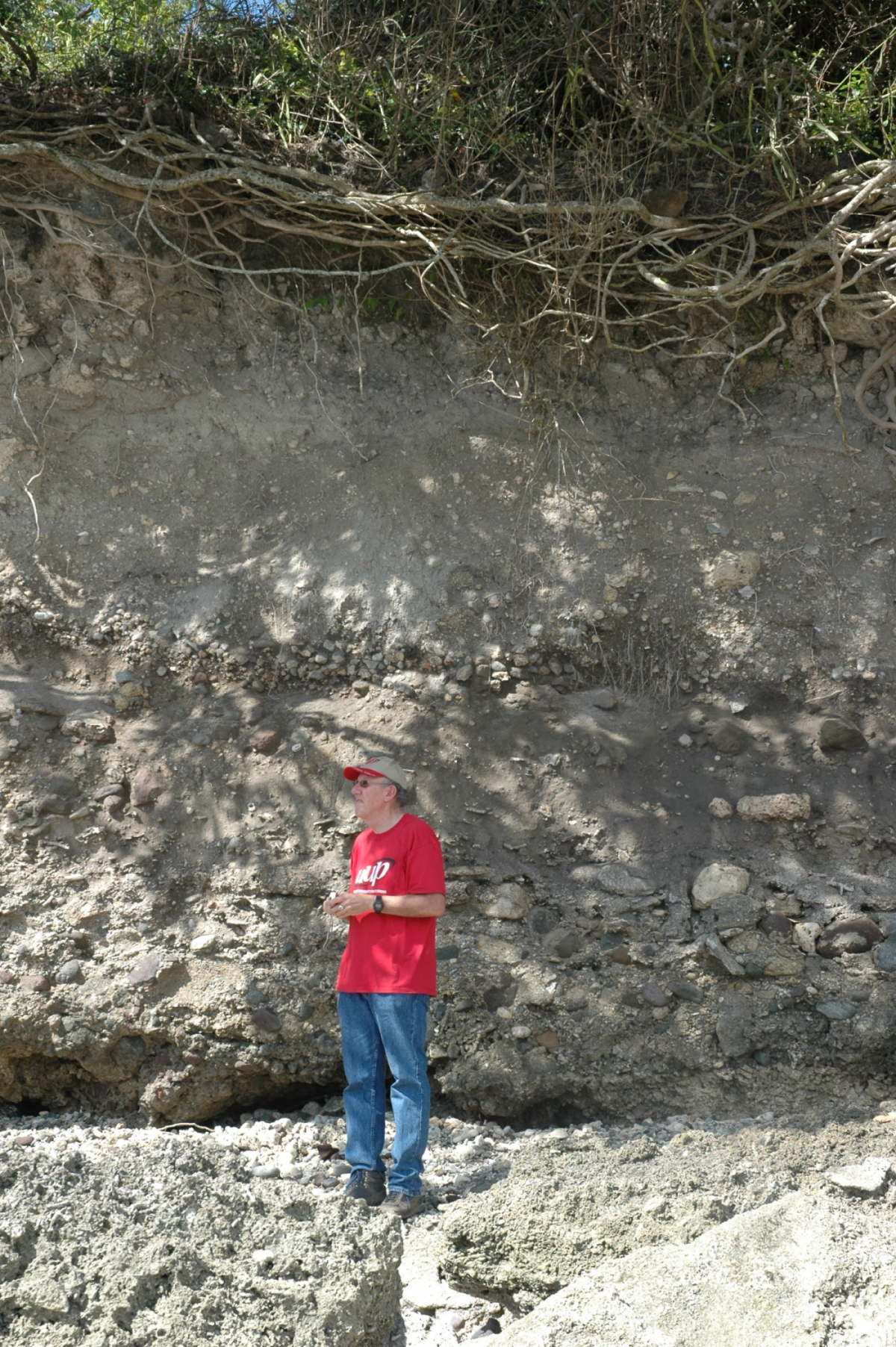
We hypothesised if the beach cliffs preserved records of human activity going back almost a thousand years, they might also contain sediment evidence for past tsunami during that time period. Having spent the previous four years working on an environmental archaeology project in the massive Niah Cave complex in Sarawak, Malaysia, I also hypothesised that we might be able to find a more extended record of paleo-tsunami deposits within coastal caves, which might provide sheltered niches where tsunami deposits could accumulate undisturbed over time.
To test these hypotheses, we surveyed over 100km of coast around Banda Aceh. We located a number of promising beach cliffs around a headland to the east of Banda Aceh that contained cultural material. We also located six coastal caves about an hour south of Banda Aceh that contained debris from the 2004 tsunami, such as sand, trees, and in one case the body of a tsunami victim.
In 2008, we worked with local partners from the Aceh Heritage Community to clear back several beach cliffs and conduct trial excavations in the interior of the two of the caves. Our work along the beach cliffs produced a rich assemblage of medieval Chinese ceramics and animal bones and several potential deposits of tsunami sediment. In one of the caves, we discovered the start of a sequence of tsunami deposits that suggested the potential for the cave to contain a much deeper and older record.

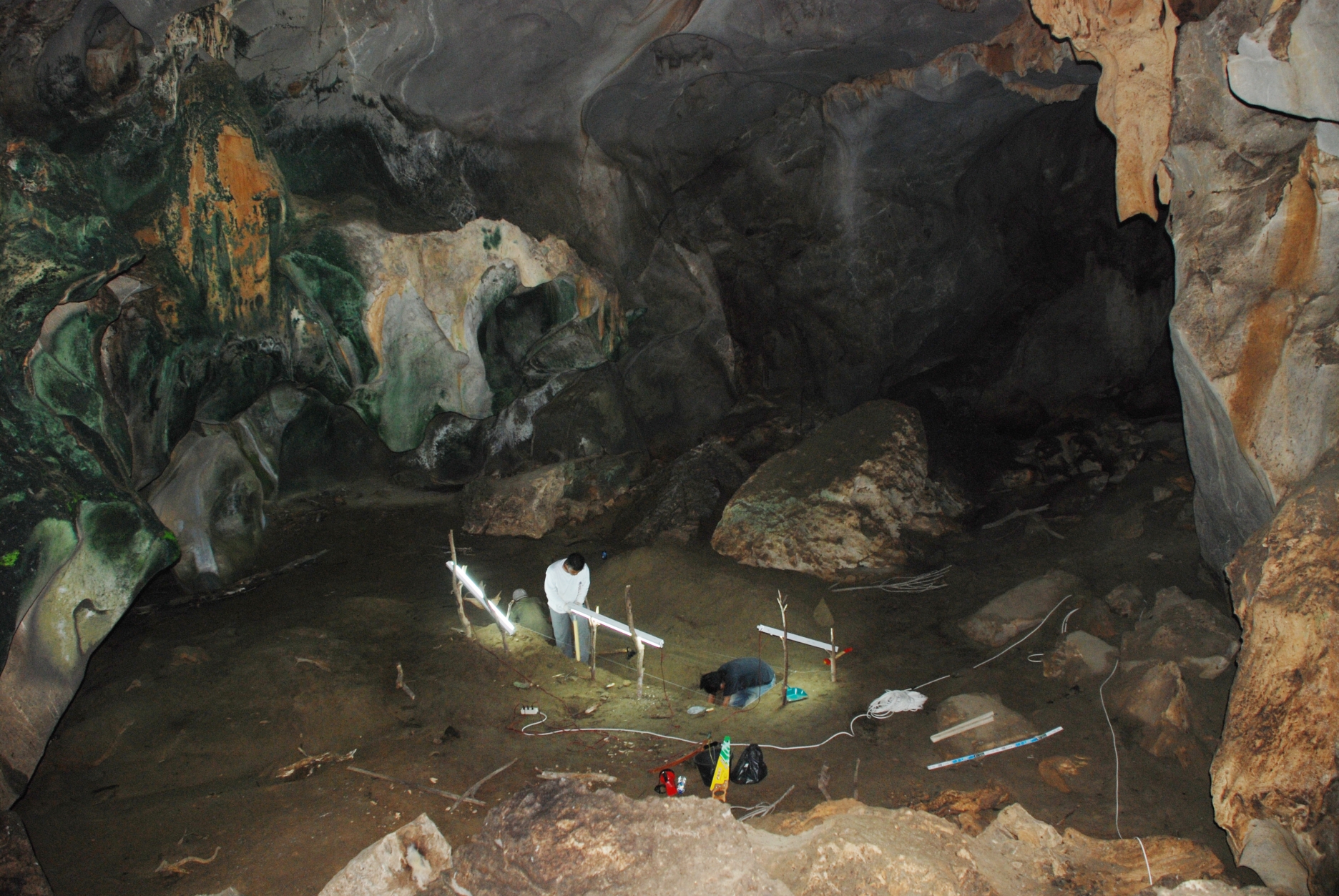
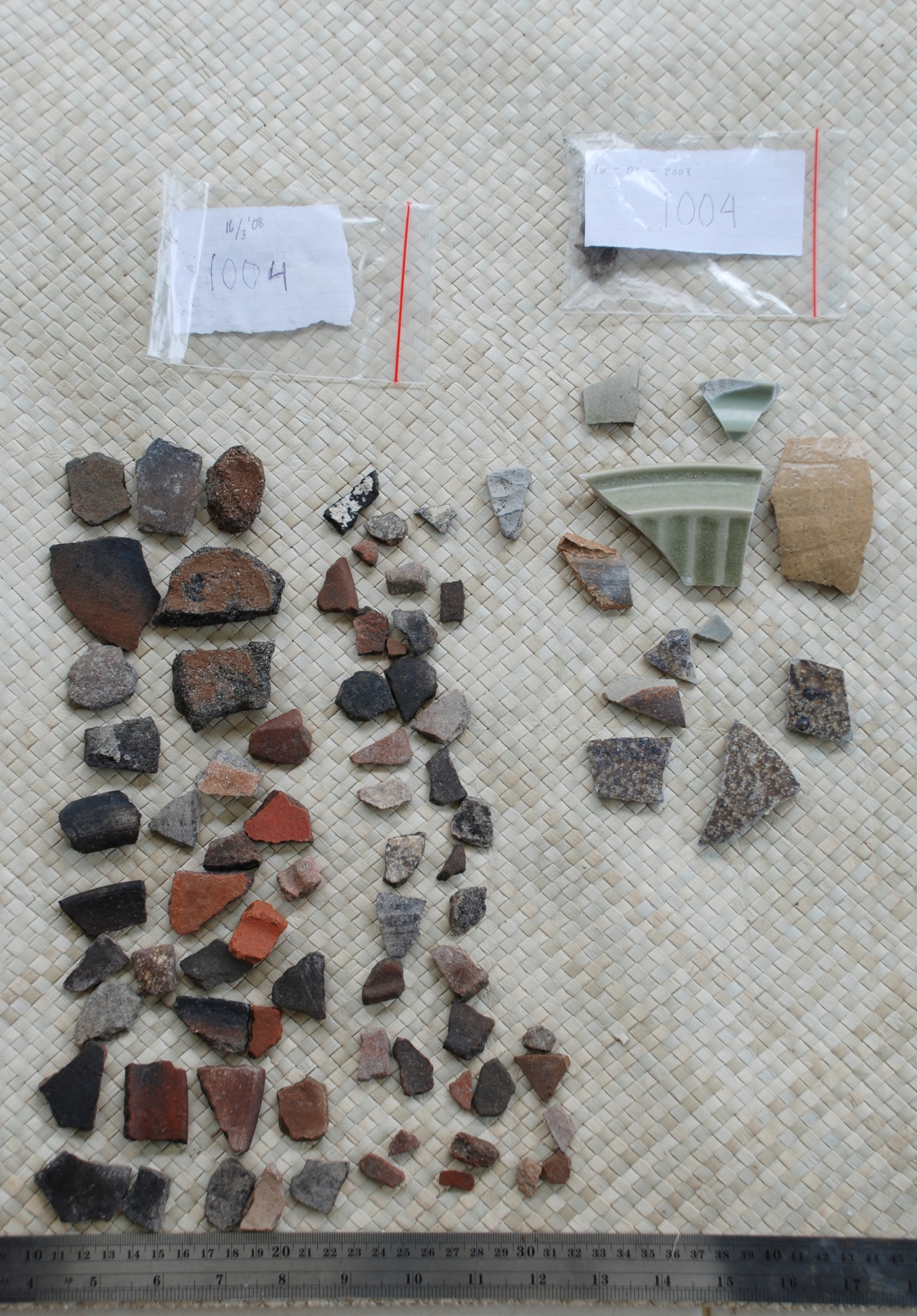
Armed with this ‘proof of concept’, I teamed up with Professor Kerry Sieh and other scientists at the Earth Observatory of Singapore (EOS) in 2010 to develop a more comprehensive and rigorous multi-disciplinary investigation of the history of settlement and natural hazards along the Aceh coast. Excavations and analysis led by Associate Professor Charles Rubin (Asian School of the Environment), Professor Sieh, Professor Benjamin Horton (Earth Observatory of Singapore) and Dr Nazli Ismail (Syiah Kuala University) in one of the caves produced a stunning 7,600-year record of paleo-tsunami recurrence firmly proving that the 2004 event was the most recent of a long sequence of irregularly-timed large tsunami to hit the Aceh coast. However, the 2004 tsunami eroded out the most recent 2,900 years of sediment in the rear of the cave, leaving a substantial gap in our record.
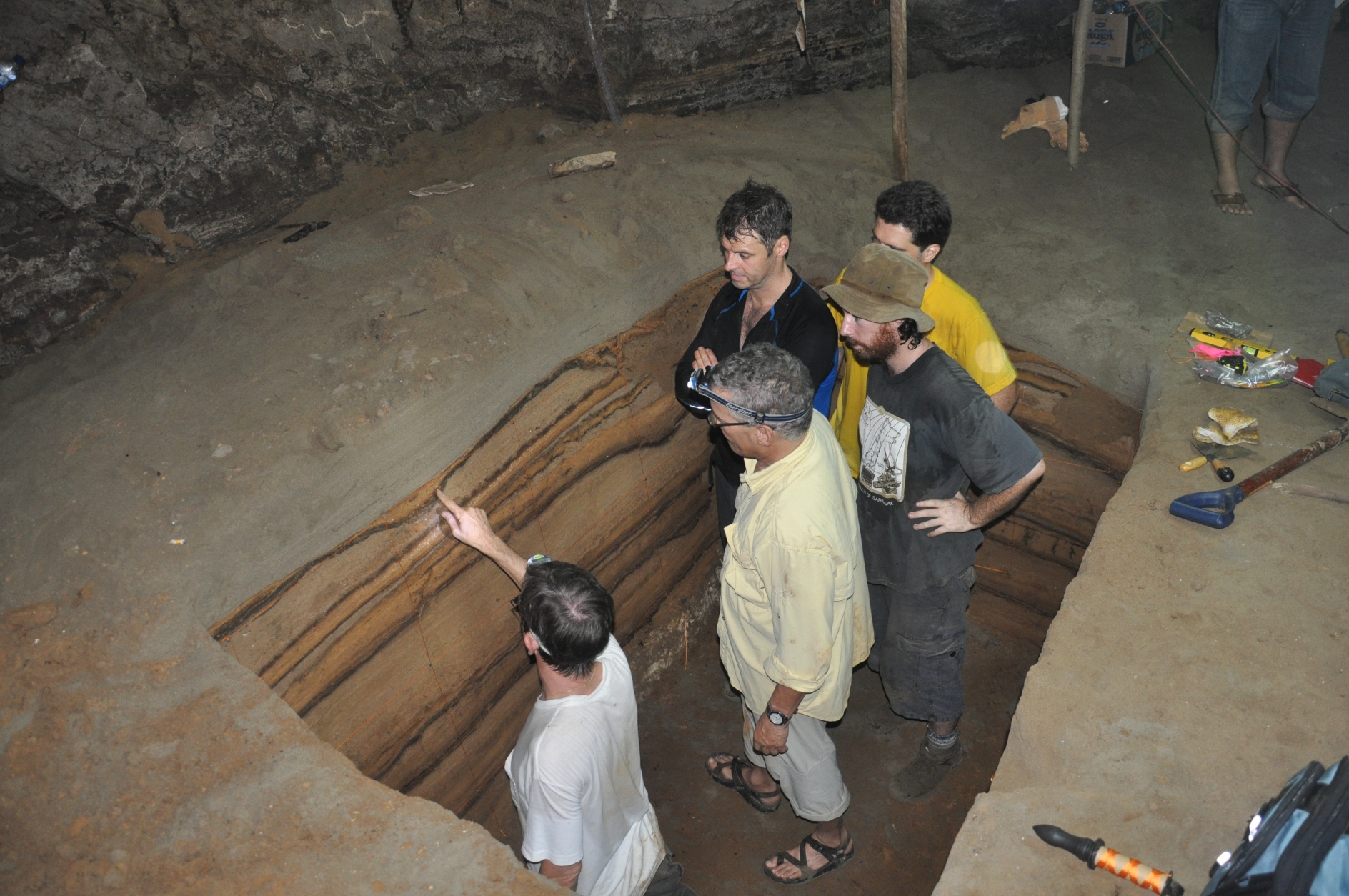
We returned to the beach cliffs in 2011 and found an intriguing record of human activity and geological evidence for a large tsunami (possibly two)that hit the coast around the end of the 14thcentury. Along one excavated section, we found a pit dug by humans deep into the coral bedrock, filled with ceramics and animal bone dated to the early 13thcentury CE. This was topped by multiple layers containing cultural material and a compacted lime foundation of a structure dating to the late 14thcentury. Geological evidence established that this structure was destroyed by a tsunami in the late 14thcentury.

This led us to question how powerful the 14thcentury tsunami was and how much impact might it have had upon coastal communities. However, we could not easily assess this because of the lack of systematic archaeological research along the Aceh coast. In 2015, we started the Aceh Geohazard Project in partnership with the International Centre for Aceh and Indian Ocean Studies (ICAIOS) in Banda Aceh. Staffed with a team of over 50 Acehnese researchers and support staff, we conducted a systematic landscape heritage survey covering over 40 km of coastal villages.
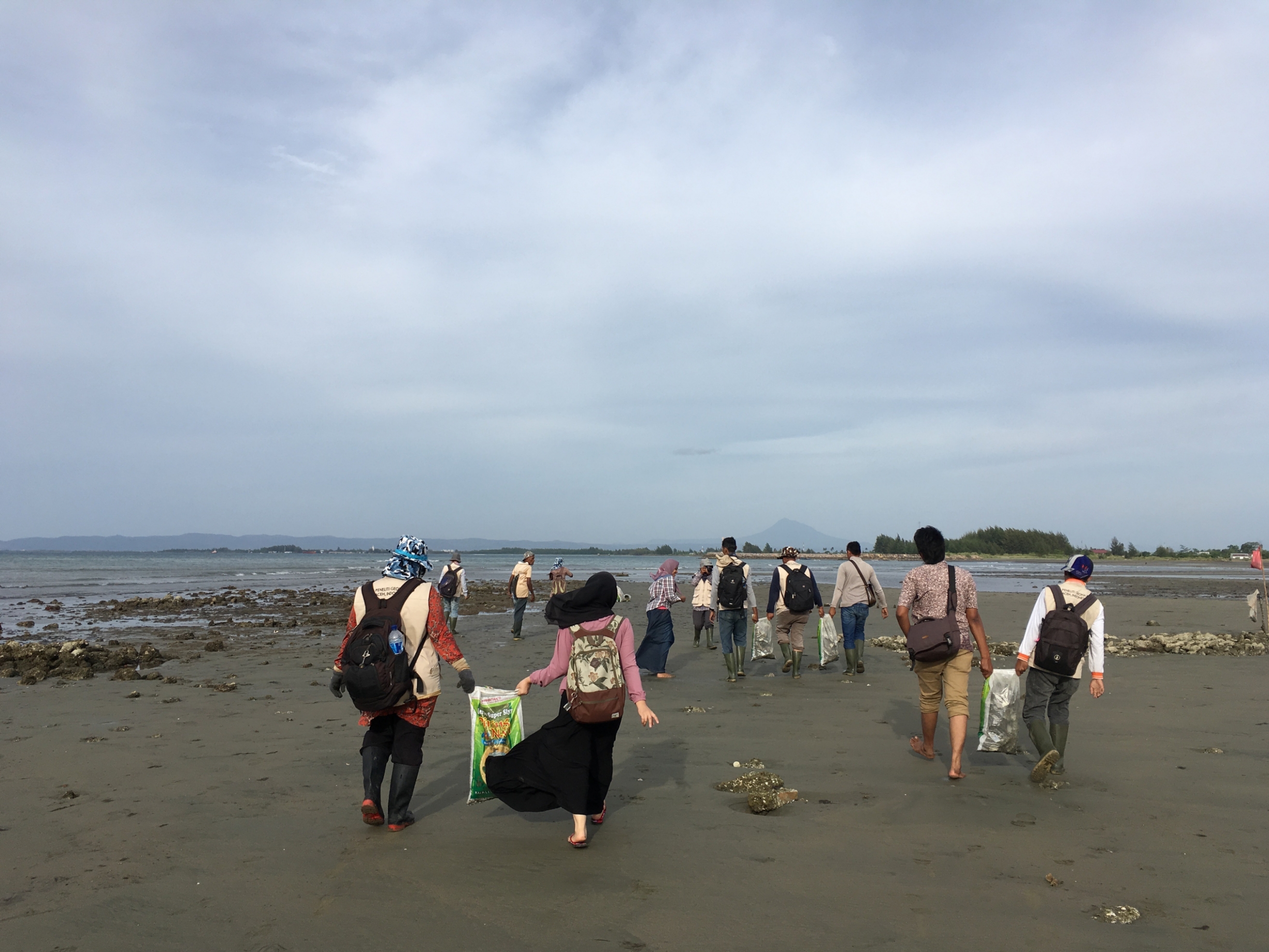
Over the course of three years, we located over 1,000 archaeological sites consisting of surface scatters of cultural material such as medieval ceramics, old stone grave markers, and the ruins of structures and fortifications. This survey provided the first empirical data about Aceh history prior to the 17thcentury, and it took several years of tedious work to analyse the data.
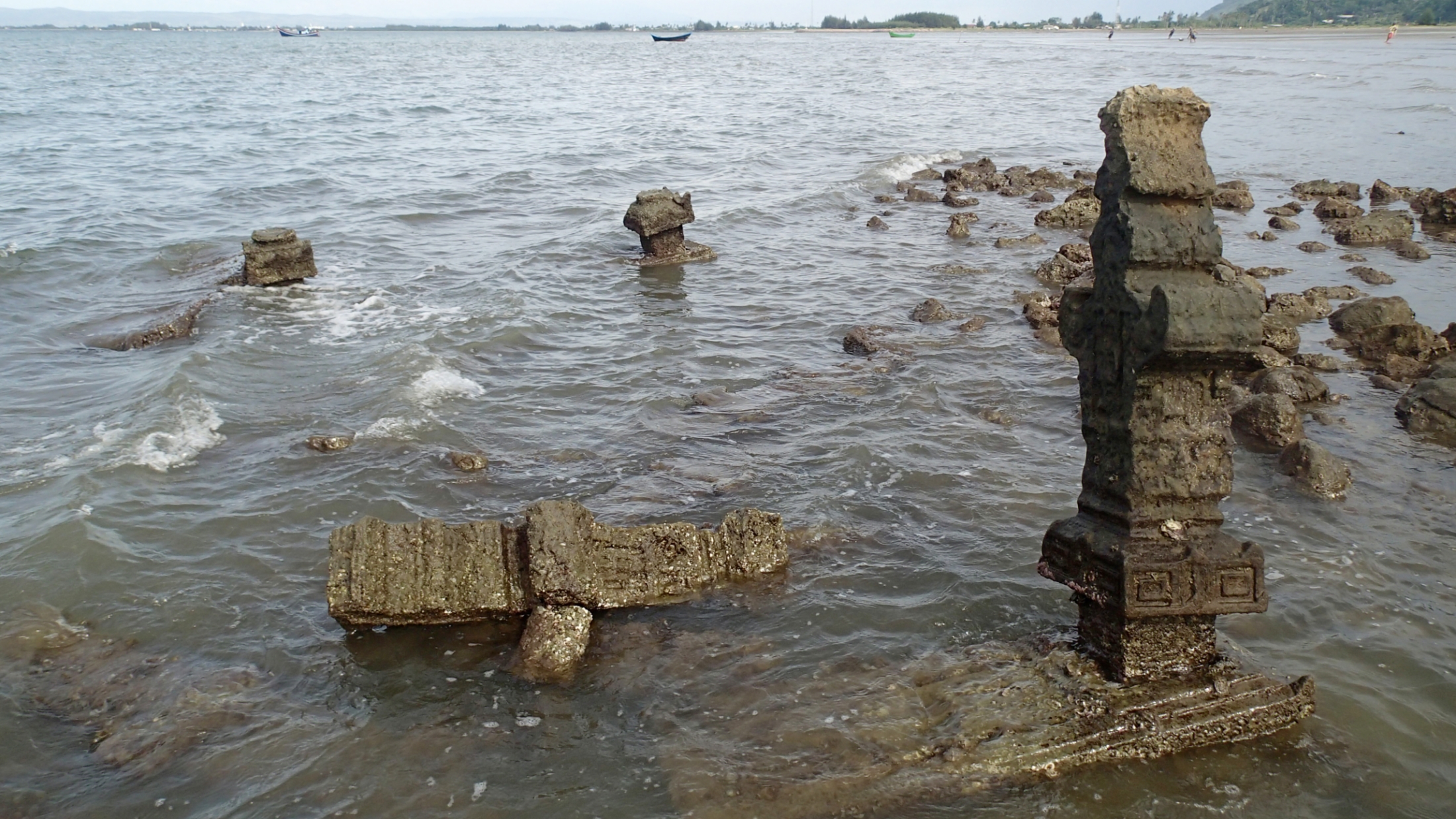
Dr Tai Yew Seng (Earth Observatory of Singapore) and Dr McKinnon spent two years working with their Acehnese counterparts to analyse over 50,000 pieces of broken ceramics, allowing us to determine when and where the ceramics were made and what they were used for.
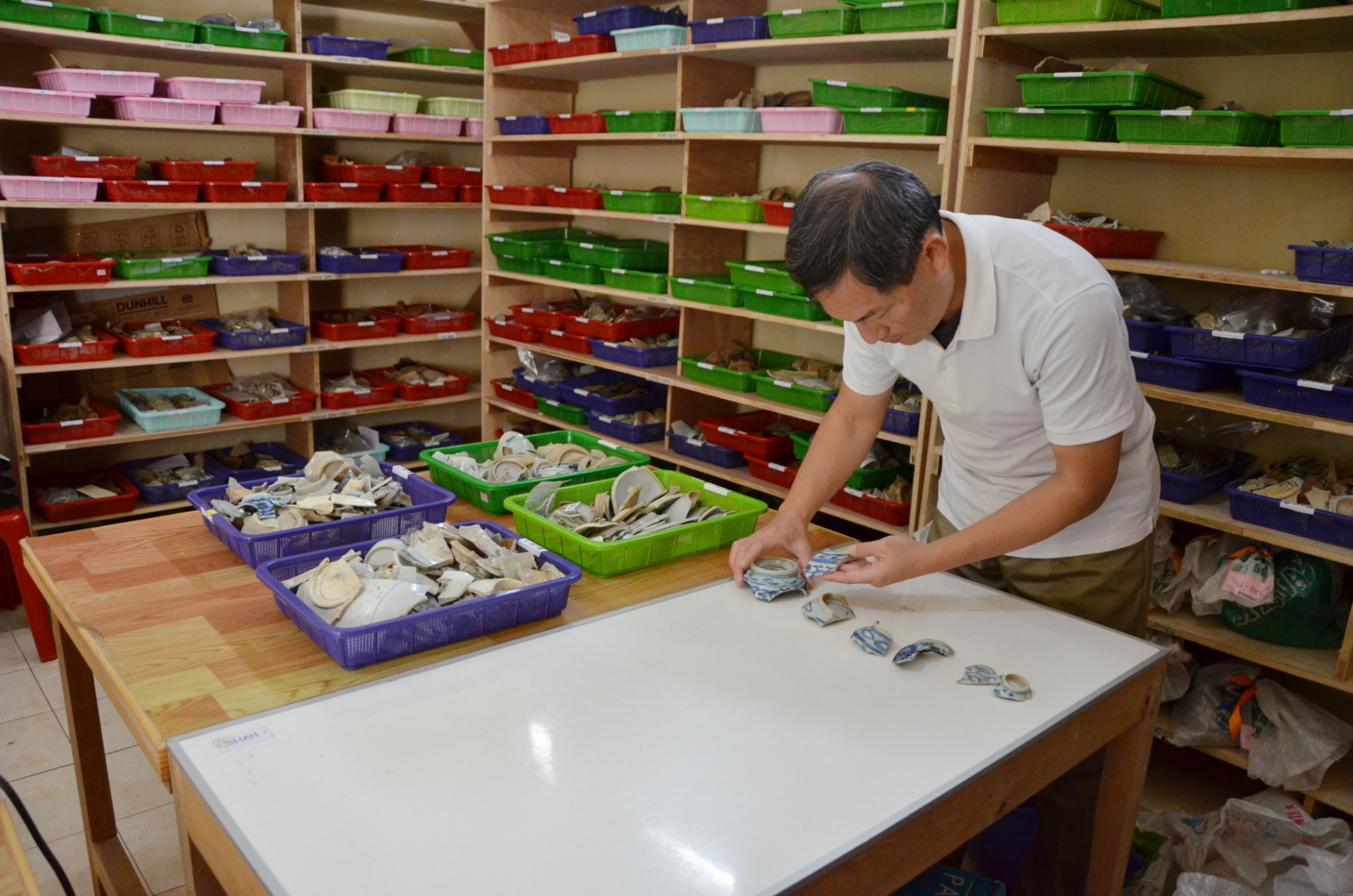
Professor Michael Feener (Oxford Centre for Islamic Studies) led a team to study the old Muslim gravestones, using Arabic inscriptions and stylistic comparison to date the different categories of stones we recorded. The GIS lab at Syiah Kuala University in Banda Aceh, led by Dr Nizamuddin and Mr Ardiansyah, used this data to produce sets of distribution maps that showed for the first time the development of human settlements along this important stretch of the Maritime Silk Road. In-depth statistical analysis by Professor Andrew Parnell (Hamilton Institute at Maynooth University) allowed us to see how patterns of ceramic use and consumption changed over time.
When combined, this work demonstrated that there were 10 clusters of human activity in our study area that started using imported Chinese trade ceramics at the beginning of the 13thcentury. Nine of these clusters were located close to sea level and were most likely some form of residential settlement. Interestingly, we found a high concentration of imported fine ware trade ceramics on a hilltop site on the eastern end of our study zone. We believe that this site was the historic trading port Lamri, previously only known from Arabic, Chinese and Malay historical sources. The data shows that before the 1394 tsunami the coast was inhabited and most likely economically dominated by Lamri.
In the five decades after the tsunami, there is remarkably little material evidence for occupation at any of the low-lying sites, leading us to believe they were destroyed by the 1394 tsunami. However, on the elevated Lamri site we found a reduced but notable collection of ceramics, including imported high-quality ceramics from Thailand and Burma and also some Chinese imperial tribute vessels that we believe were gifted by the famous Chinese admiral Zheng He on one of his voyages through the Straits of Melaka. Starting the early 15thcentury, the inhabitants of Lamri – most likely members of the ruling elite – developed a new form of Muslim funerary monument, locally known as plang plengs.
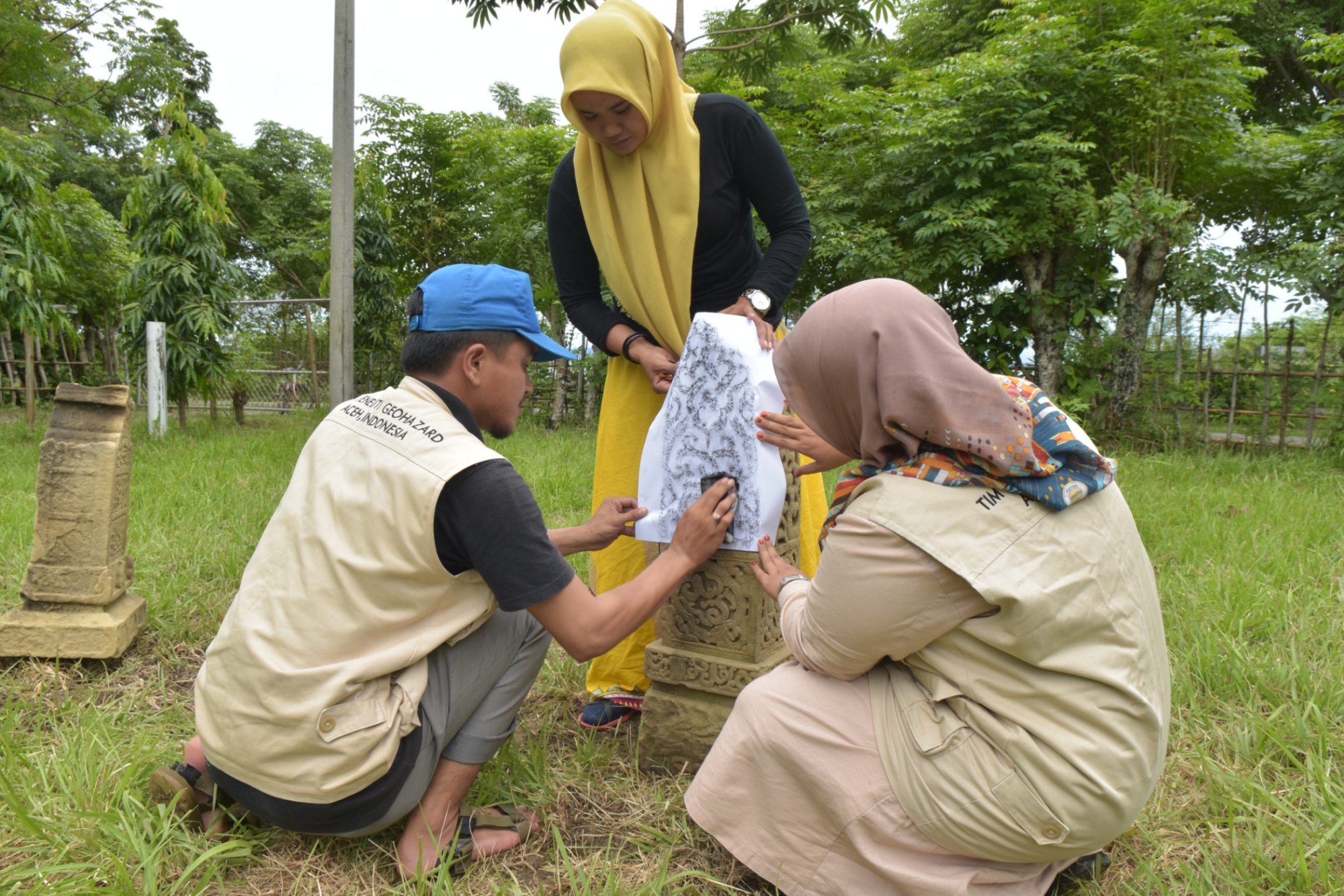
We were able to date a number of these ornately carved gravestones to between 1418 and 1484 based upon Arabic inscriptions providing the names and dates of the deceased. The archaeological evidence shows that while the tsunami destroyed all low-lying coastal areas, activity continued throughout the 15thcentury in areas that were above the height of the waves.
Towards the end of the 15thcentury and the beginning of the 16thcentury, there was a major change in the organisation of activity along the coast. The sites destroyed by the tsunami started being used again after 1450 in the same locations that were inhabited before the tsunami, showing geographic continuity. However, a close look at the ceramic data reveals that the centre for trade (and thus most likely overall economic control of the coast) started to shift from the port site of Lamri to a new political and economic centre at the western end of our survey zone. By 1506 there is evidence that the main point of the trade for Chinese ceramics had consolidated around the western sites, with Lamri abandoned by 1550.
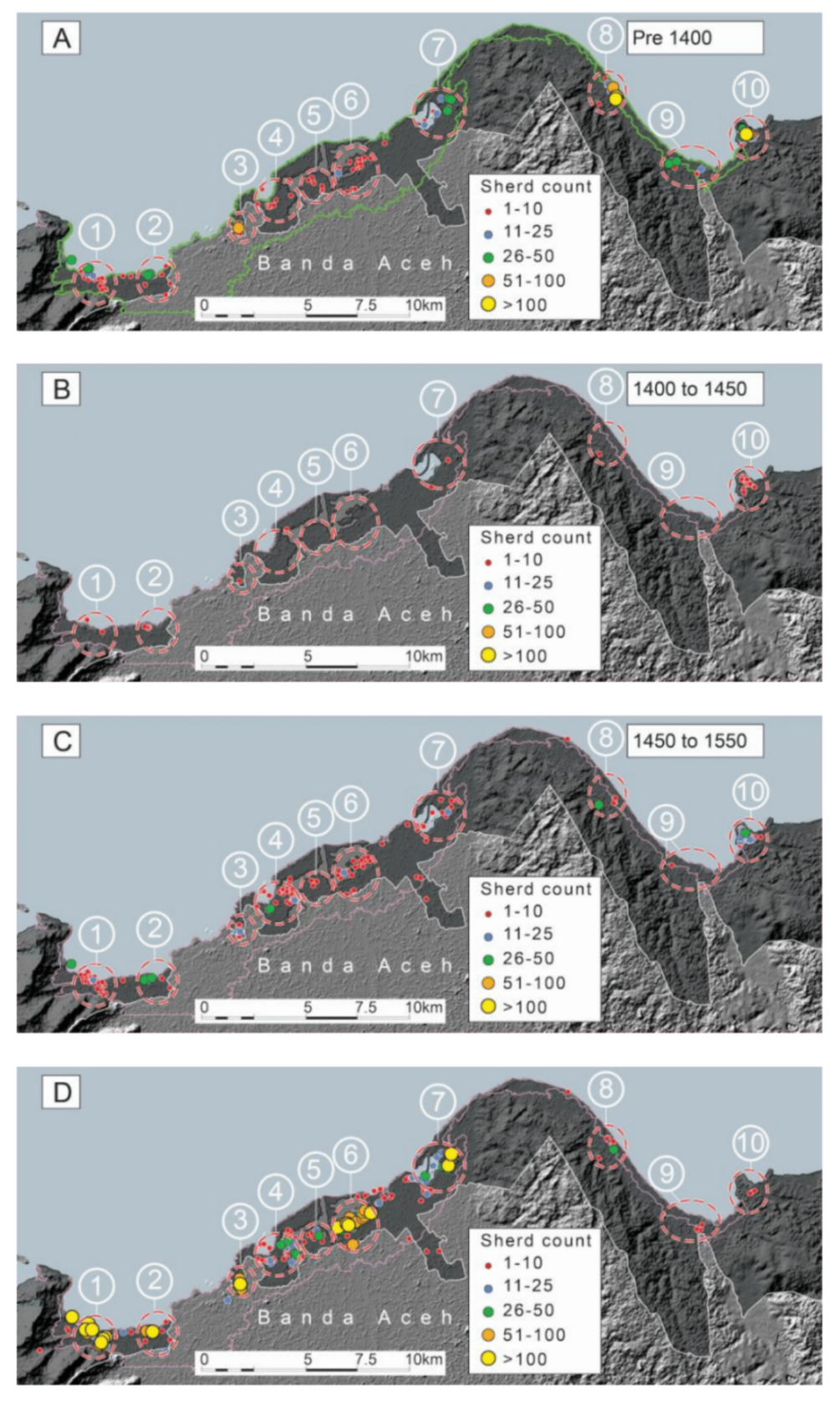
We believe that the destruction caused by the 1394 tsunami opened up space along the coast that was occupied by groups of in-migrants from other trading sites in the Straits of Melaka – especially from Pasai and Melaka after the Portuguese conquest in 1511. The consolidation of these people and shift of Muslim traders from Lamri to the low-lying coastal settlements created the foundation for what became the Aceh Sultanate – which grew to be one of the most powerful polities in Southeast Asia between the mid 16thto early 19thcenturies.
The archaeological and geological data we collected in Aceh provides us with a cautionary tale about the dangers of infrequent but powerful hazards like a tsunami. We hope the more complete picture of the tsunami history of the eastern Indian Ocean and its impact on past societies that EOS and our Indonesian partners have developed will raise awareness of the dangers of living along the Aceh coast, and hopefully factor into long-term hazard mitigation plans.
(Source of thumbnail image: Patrick Daly/Earth Observatory of Singapore)